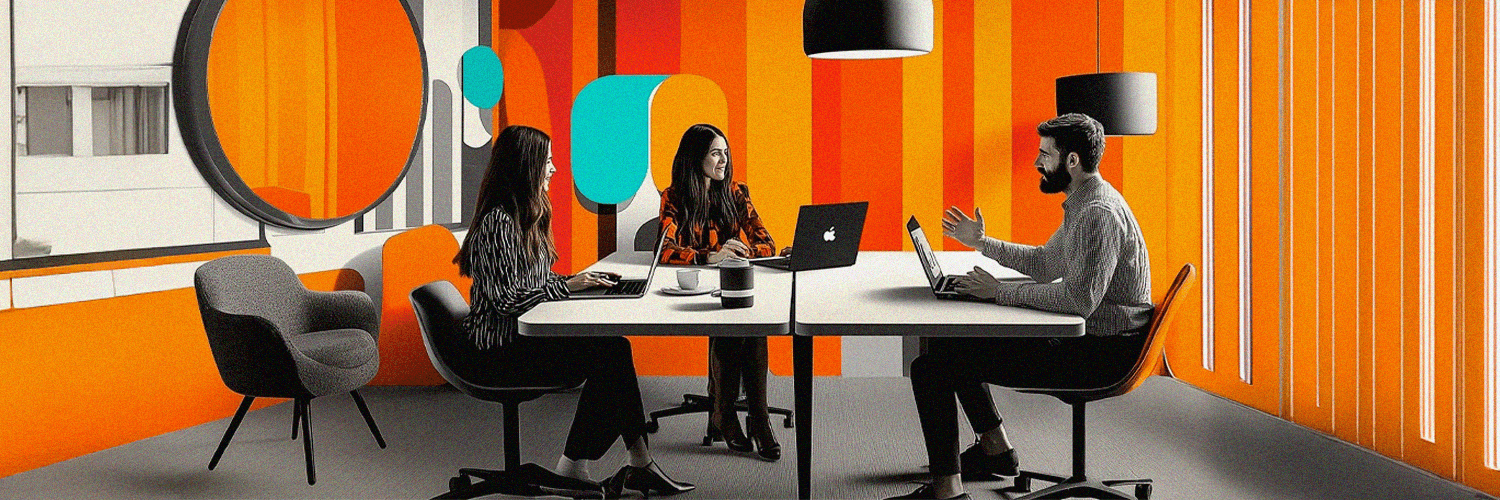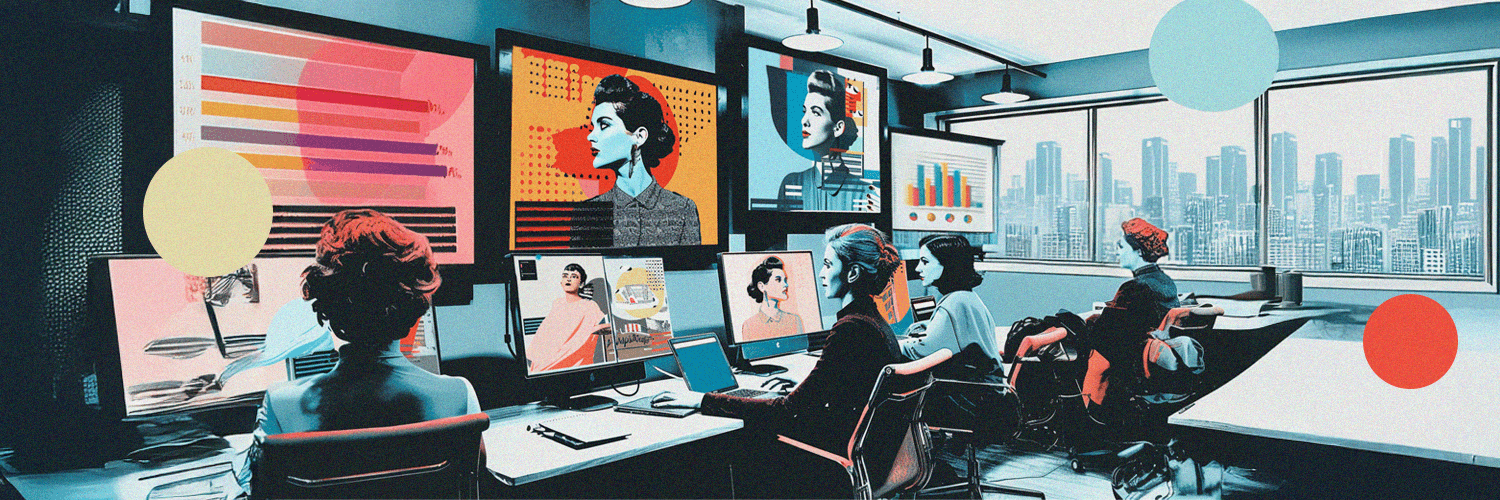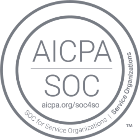Does anyone else feel like 2022 was like three years all rolled in one?
No? Just me? OK, I guess.
Wars, economic downturns, layoffs -- they all made the headlines this year (yes, they all happened over the last year, imagine that!) Whatever joy the world had regained from COVID-19 slowly stepping out of the limelight felt overshadowed and meager, by comparison. In the wake of an uncertain world, the "New Normal" suddenly became old news, and 2021 had to wake up early in the morning to have a chance at keeping up.
But between all of the craziness, there were glimmers of hope. A lot of them. People showing solidarity, workplaces learning that it's not all work and no play, and people working hard and making the most out of their circumstances.
We were curious how businesses managed to rise above when everything seemed to be going downhill. So we reached out to HR professionals and leaders to see how they navigated what seemed to be yet another 12 months of turmoil, changes, and re-adjustments.
Here's what they had to say.
Flexible Work, the HR Keyword of the Year
2020 was all about remote work. 2021 was all about adjustments. And in 2022, companies started to learn the true meaning of flexibility in the workplace. As Ilija told us,
"The growing desire of workers for a better balance between their professional and personal lives has caused a real upheaval in-office use. The separation between the two, once distinct and rigid, is now blurred, giving way to more flexibility, according to the needs of everyday life. To follow this dynamic, workplaces are being transformed into social hubs, integrating living spaces, such as bars and restaurants, cultural spaces, or well-being spaces. The opposite is also true and workspaces appear in the heart of places of life or entertainment, such as shopping or cultural centers."
Ilija Sekulov, Marketing at Mailbutler

"Humans" Trumps "Resources"
It's easy to lose sight of the human element when talking about workers, particularly in these times. But at its core, a workplace still relies on humans to get the job done. AI may someday replace this completely -- but no matter how much the tech world is buzzing, we're still very far away from that.
More than one leader confirmed this to us by pointing out the importance of putting your people first. Their well-being, inclusion, and growth will help your business move the needle.
"The most important lesson I've learned in 2022 is that your team is everything. You can have the best product, the best technology, and the best marketing strategy in the world, but if you don't have the right people to implement them, it doesn't matter.”
-- Gauri Manglik, CEO at Instrumentl
"Your staff is your most valuable asset. While you might think your products and services are what makes the world go 'round for you, there would be no profit if it weren't for your employees.
The truth is that no matter how small your business is, you never succeed alone. They will always be the people who helped you get where you are."
-- Andrei Vasilescu, CEO & Co-Founder at DontPayFull
"The most important lesson I learned in 2022 is the importance of creating a positive and inclusive workplace culture. With remote working becoming the norm, it's more important than ever to ensure employees feel connected, supported, and valued. Creating an environment where everyone feels comfortable enough to speak up and share their ideas can lead to innovation and improved productivity. Investing in employee experience initiatives such as virtual and live team building activities, mentorship programs, flexible work hours, etc., can help foster this type of culture."
-- Tomasz Niezgoda, Head of Marketing and Co-Founder at SurferSEO
"If there is a thing 2022 has confirmed in our company, it is that our talents are the main strategy of the business. We work hard to help and develop our people once our professionals are the key pieces of the company. They are the ones who generate and leverage the results that lead the organization to success. Therefore, we have created strategies that value their talents and leverage their skills and strengths. In our company, we have been training and developing the ability of our leaders to work with diverse employees.''
-- Ricardo Luis von Groll, Manager at Talentify
"2022 taught me how to focus on the well-being of my employees. Not only physical health but mental health is also critical for the well-being of a person. Due to the pandemic, remote work was also prevalent in our company. Although there was no issue in productivity, many employees got extra stressed. So, I realized there was an immediate need to focus on the well-being of my team. I started virtual mentorship sessions to connect with my remote employees. In these sessions, employees can discuss any issue with their work or schedules. And the assigned mentors try to help them and find solutions for them."
-- Michael Woods, Office Manager at Uniwide Formations

Data & Tech Still Make the World Go Round
Judging by the news headlines, you'd think we're heading toward a techpocalypse. But data and tech still make the world go round by helping businesses better understand and serve their position, their employees, and customers alike.
The leaders we approached confirmed this as well:
"Data can tell you numerous things about your company. With the right eye, you can find out just about anything you want to know. Personally, the most important lesson I’ve learned this year was to link data to employee experience.
Burnout and The Great Resignation were both huge challenges that were linked to how employees grow dissatisfied with their workplace conditions. Using data such as tracking employee engagement and even something as simple as attendance scores can tell us a lot about the red flags we need to identify at our workplace."
-- Will Yang, Head of Growth at Instrumentl
"Technology can be used to enhance existing employee experiences, such as creating an online portal for employees to access benefits information, setting up online forums for open dialogue and collaboration, and using virtual learning to provide training and development opportunities. By investing in employee experience, organizations can ensure a more productive and engaged workforce."
-- Harry Johns White, Marketing Manager at NBA Blast
''I’d also say the most important lesson learned this year is that the nature of work is evolving. Companies need to prioritize technological efficiency for their workforce now and look forward to the future. Invest in secure data and staff management technology that employees will feel comfortable and confident using. This is particularly important for remote companies as well as companies that are embracing hybrid work. It’ll have a long-term effect on cybersecurity, infrastructure, retention, and productivity.''
-- Andrew C Belton, Owner at Symmetrical Media Marketing
Time Out, That's Serious Talk
Life is life...and work is work. You can't grow sustainably, keep your employees happy, and make sure everyone is productive if you don't get the basics right. And time off is, well, basics.
"I've seen, time and time again in the news, that many businesses do not actively encourage their staff to take time away from work in the sense of turning off email notifications and promoting the benefits of leaving the desk, whether working from home or in the office.
Certainly for home workers, they often need that physical separation of work and home; it's vital that companies promote this practice of separation into 2023."
--Wendy Makinson, HR Manager at Joloda Hydraroll
"One takeaway from 2022 is that time away from the desk should be actively encouraged across all team members.
It's often not even an issue with the company itself... many employees come from companies that have instilled that time spent away from looking at your work phone or time away from your desk is a bad thing, so they naturally feel guilty for doing so.
In the era of hybrid working, it has never been more important to encourage healthy working habits and time actively spent away from your desk or work phone."
-- Tracey Beveridge, HR Director, Personnel Checks

It's More than Just Numbers
"2022 was all about cultivating talent. Too often, employers want the perfect candidate who can do all the things on a checklist. However, it’s important that we hire for potential and grow people into their roles. That growth may look like hands-on training, tutorials, or a 10-minute Zoom call. Innovation in the workplace starts with us recognizing talent and taking the time to cultivate it."
-- Shayla Price, Founder at PrimoStats
"In the recent past, I've learned that mere paychecks are no longer sufficient to sustain good talent at your firm. Training and development for your employees and good work culture have become a must. There's more that individuals aspire for now than just money. We have to develop as organizations if we aim to be successful and have dedicated employees."
-- Preston Powell, CEO at Webserv
''This year, I learned that life is not always about money, which was my most valuable lesson. My epiphany is situated within the framework of employee experience. Employees will seek companies in 2022 and beyond that will value their efforts and recognize them if they go above and beyond for the company. Additionally, they aspire to a balanced existence with separate personal and work lives. They want to flourish in an environment where employee wellness is a primary concern rather than merely a side issue. The importance of emotional, physical, and professional wellness is greater than that of money.''
-- Sheila Stafford CEO at TeamSense
Staying One Step Ahead: It's Hard Work, But it Pays Off
You don't have a crystal ball to tell the future. But you have data, the news, and the internet to stay informed -- and even the smallest step you can make ahead can make a world of difference for your business. Here's what Jeroen told us, for example:
"One of the most important lessons business owners have learned this year is that they need to be proactive when it comes to HR. Instead of waiting for an issue to arise, they should take steps to ensure that their company has a positive human resources policy in place from the start.
This way, they can avoid costly mistakes down the line and keep their employees happy and engaged."
-- Jeroen van Gils CEO at EcoLife
Control What You Can, Let Go of What You Can't
There's no point in trying to control the uncontrollable. In 2020, organizations had to face numerous circumstances that were beyond their control. In 2021, everyone thought the pandemic would be over, but it took another year to clean up the mess.
And in 2022, we learned, once again, that circumstances out of our control can have significant impacts on our operations, so the best we can do is to manage what we can in the best way possible.
"I regularly deal with various candidates because I work in human resources. When candidates are placed, the entire process can become overwhelming. I used to become very frustrated and agitated when those candidates left the company only a few days after starting work without providing me with a solid explanation. The negativity was also interfering with my ability to do my job. But over time, I concluded that I should limit my attention to things I can control this year.
The past is irrelevant, and dwelling on everything that went wrong will only cause me trouble. Therefore, I discovered how to concentrate on the present and how to continue to improve the present."
-- Derrick Hathaway, Sales Director at VEM Medical
"If 2021 was a year of change and adaptation, then 2022 has been a year of working out the new normal for our workplace at Helium Marketing. Never has there been such a clear precedent for working from home and leveraging technology to improve communications. By and large I think this is hugely positive, however the main lesson I have learned is to be the manager our employees need, not want.”
-- Scott Ingram, Director at Helium Marketing
“The hangover from Covid from the previous year still challenged traditional workplace relationships and work-life balance. Add on another year of volatility in 2022 and people are going to be burnt out. Going live doesn’t just apply in a work context. Being active in managing your team’s energy levels and encouraging people to take action to rest and recuperate ensures we’re the best version of ourselves every day - and therefore, at peak performance - even when there are some things in the world not at their best.
There were many challenges in 2022, but to turn challenges into opportunities, the first step you need to take is literally that: an action.“
-- Shirley Liu, Chief of Staff at Finder
-1.png?width=928&height=523&name=49%20(1)-1.png)
It's Not About Being Perfect
Trying to hit all the goals, shine bright, and stay sane?
Try again. Growth isn't about being perfect -- it's about failure and learning.
"The most important lesson I've learned this year is that you have to be willing to fail in order to succeed.
I used to think that if I wasn't perfect, then I must be failing. But after years of working on my own and seeing other people's successes, it has become clear that success comes from trying new things and making mistakes along the way. Ultimately, it's not about being perfect--it's about doing your best and learning from your mistakes."
-- Chris Wainwright, Chief of Staff at Humi
There's A (Way) Bigger Picture to Keep Our Eyes On
"This realization of how much our souls want and depend on nature has reinvigorated our enthusiasm and resolve to better safeguard and maintain these amazing, but terribly imperiled, natural areas and wildlife. We learned what cities look like without traffic; we heard birdsong more clearly; we observed wildlife exploring once-busy regions; and we saw the planet breathe a sigh of relief. Mother Nature was (temporarily) allowed to breathe again when factories ceased operations, maritime traffic diminished, and aviation traffic was grounded. We had a peek of the very real effects of our carbon emissions and hefty footprint as the haze began to dissipate. has shed light on our lifestyles, everyday behaviours, and the detrimental impact they have on our world. Add Sir David Attenborough's A Life On Our Planet to your 2023 to-do list if you haven't already."
-- Jamie Irwin, E-commerce Growth Expert, at James & James Ecommerce Fulfillment
What About Yarooms?
We'd lie if we said 2022 wasn't a rollercoaster for us. We grew, that's for sure. And it didn't always come without the proverbial growing pains. But towards the end of this year, it seems all of our hard work finally came to fruition, when we secured a €2 million investment (our first ever!)
So instead of basking in the glory of this win, we rolled up our sleeves and put together something important. Perhaps the most important thing we've ever done: we released our CO2 emissions tracker, embedded in Yarooms, to help businesses track, monitor, and reduce their carbon footprint.
Was 2022 tough?
Yes but all the good things that happened this year for us and our customers outweigh the bad – and we couldn’t be more grateful for that.
We ended this year with a renewed sense of purpose and optimism for the next year: to build on what we've been doing since 2010 and be the best at it.
On behalf of the Yarooms crew, we wish you a happy, fruitful, and sustainable 2023!
%20(15)-1.png)










